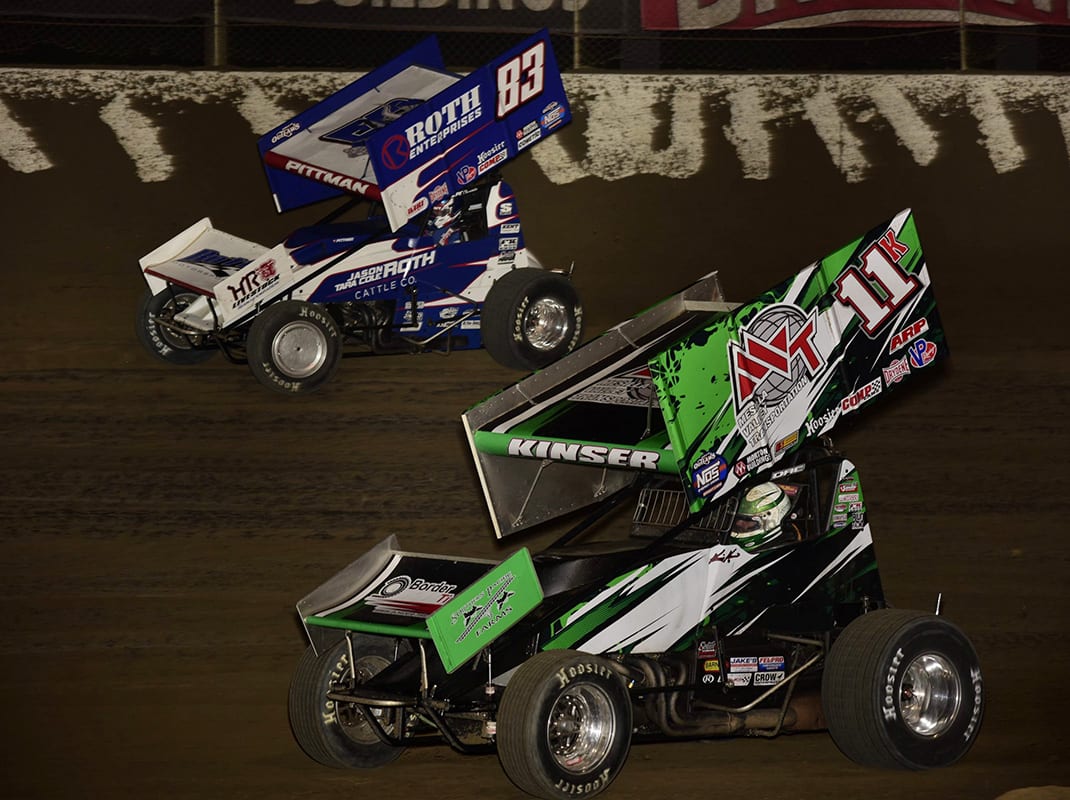Father Time hits as hard as a Mike Tyson uppercut. It might not be a knockout blow, but the aches and pains noticed while climbing out of bed each morning can be just as severe.
Now imagine waking up in a toterhome or a motel fresh off a violent flip at more than 100 mph the previous night. For those fortunate to enjoy racing careers into their 40s or 50s, someone call a doctor, stat.
Short of Sammy Swindell, 62, showing everyone where the Fountain of Youth is located, the lifespan of a professional sprint car driver is fairly short.
Not only do the bumps and bruises add up and take longer to heal, hand-eye coordination fades as age increases. Therefore, most racers need a backup plan for when racing meets the checkered flag.
“It’s something we think about daily and is something that we’ve started looking at heavily as our family grows,” said 2013 World of Outlaws NOS Energy Drink Sprint Car Series champion Daryn Pittman, who has spent most of his adulthood chasing races. “You can’t race until you retire and very few are making the living you can retire off of. At some point you have to start shifting your focus to having a business or starting another means of income. There have been lots of people who have come up with different things, whether they have a daily business they can run, storage units, rental properties.”
Pittman says owning a business is a logical next step to set his family up for a successful future.
“We’ve been blessed to be able to do this a long time,” said Pittman, who is 41. “As a family, we do well of living well within our means. That is helping set us up for life after racing. In the same token, it’s nowhere near the point you can retire off of.
“I believe that’s a direction that we’ll head to whether that’s a racing business or not. That’s something we have looked into and are currently looking into.”
Former World of Outlaws driver Stevie Smith recently went through the transition from full-time racer to part-time racer to retired racer. Smith climbed out of a driver’s suit following the 2016 season after 31 years of wheeling the high-horsepower, open-wheel machines across the country.
“Most race drivers, I don’t know what it is, I guess you don’t have time to think about retirement,” said Smith, who operates Smith Titanium. “As you get older, I still haven’t had time to think about it yet. I don’t think I retired. I retired from driving, but I’m still making race parts. I’ve been making some of these parts and fasteners my whole life. That’s just what we did. We built a lot of racing parts. One day it turned into ‘Why don’t we try to sell some of these things we build?’ Now I’m glad I have a business because you’re going to need something.
“I was making things for our own car and it led me into making them for other cars,” Smith noted. “I could see my driving career was going to be slowing up. The last two years while I was racing it was getting so busy that I couldn’t race. I couldn’t leave to go drive. One day I had to pick one. I had to take the business because I’m getting too old to drive that car. I had to make a wise decision. After doing it for 31 years — the driving part — I was sort of ready to stay at home. I got so busy in the shop and that’s how it took off.”
Smith was fortunate that a skillset he learned at a young age and that helped him throughout his racing career could be corralled into a business.
Smith Titanium was born “seven or eight years ago” and has developed into a leading titanium parts company.
Tony Bruce Jr. has followed a similar path in recent years. The former World of Outlaws and Lucas Oil ASCS National Tour competitor sold his equipment after the 2015 season and has spent the last few years focused on his businesses while racing for other teams when his schedule allows.
“It was the thought process that if racing all of a sudden disappeared one day what would I do,” he said. “Those questions started to set in my brain; I need to figure something else out in case.
“I got to the point where I didn’t want to be 40 to 45 years old and have nothing but an ex-race car career. I wanted to take some time away to develop, get my businesses going. Then, if I wanted to have my own car I could. I could go back to enjoying it rather than feeling I had to chase every race.”
Click below to keep reading.
